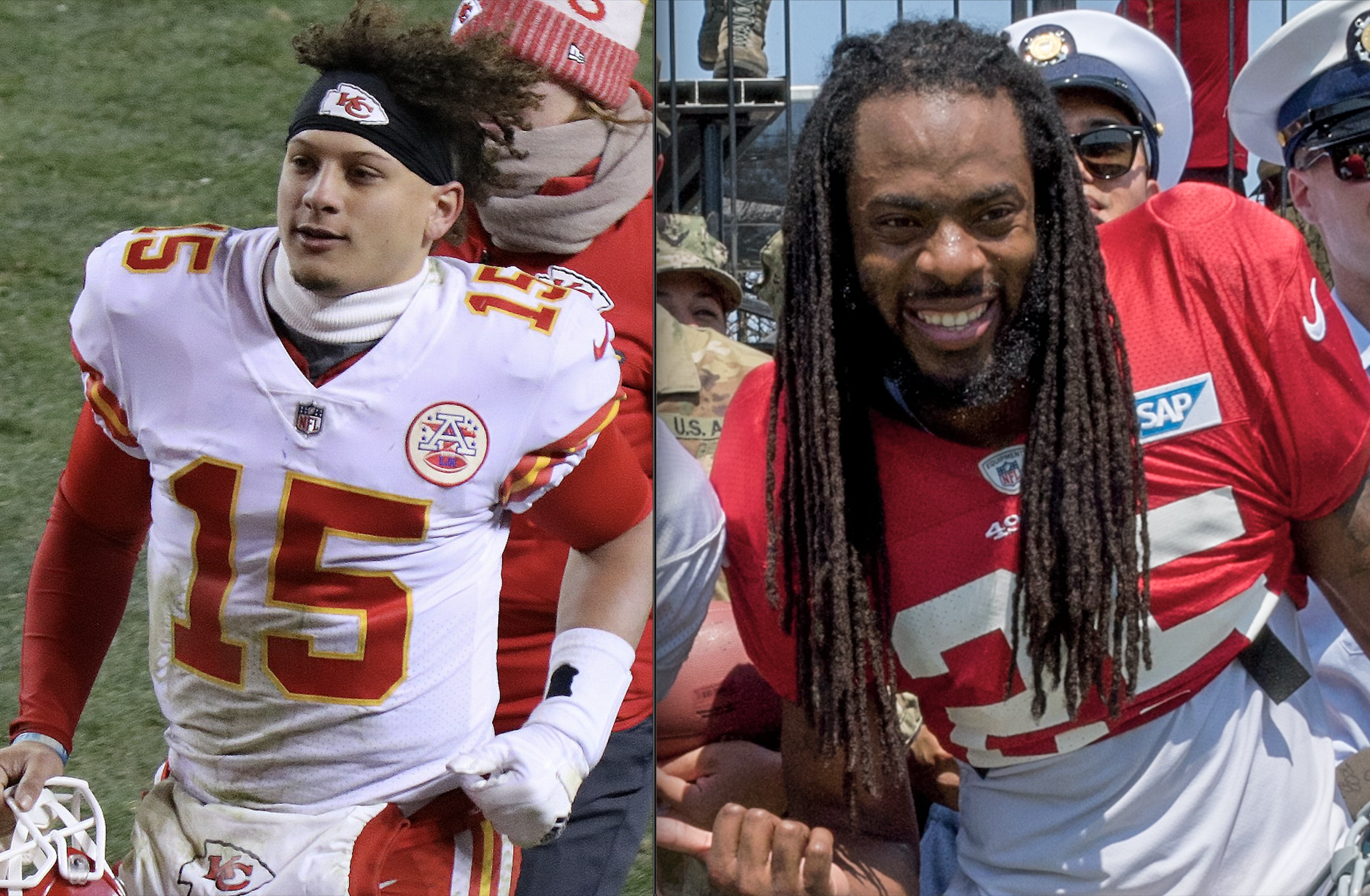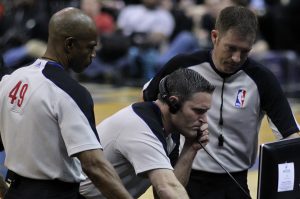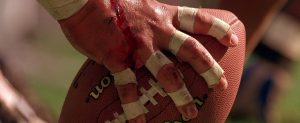“It starts with a whistle, and ends with a gun. Sixty minutes of action, from kickoff to touchdown. This is Pro Football. The sport of all time.” – John Facenda
This is the hundredth season of the National Football League (NFL), and the league has done a wonderful job reminding us all of its rich history and tradition. Over the last century, pro football has evolved tremendously on both sides of the ball, but the qualities that make championship teams have remained the same. Toughness, discipline, intelligence, and teamwork are the hallmarks of this great game, and both the San Francisco 49ers and Kansas City Chiefs exemplify these characteristics.
Both these teams have much to do with the long standing success of the NFL. Pro football would not be what it is today without the formation of the American Football League (AFL) in 1960. The founder of the AFL was Lamar Hunt, the man who also owned the Dallas Texans. Interestingly enough, the Texans and the Dallas Cowboys were established in the same year and fought for market share in the Dallas area. In their first few years of existence, the Texans were a far more successful team, as they won the 1962 AFL championship in a legendary double-overtime duel with the Houston Oilers. Ironically enough, the same two franchises met in this year’s AFC Championship Game, as the Kansas City Chiefs and the Tennessee Titans.
The following season, Hunt decided to move the Texans to Kansas City and rename them the Chiefs because the NFL’s Cowboys were recognized as a more legitimate team, a problem Hunt and the AFL had to rectify. In 1966, the first AFL-NFL World Championship Game took place between Hunt’s Chiefs and the Green Bay Packers, coached by Vince Lombardi. Dubbed the “Super Bowl” by Hunt, the Packers tossed the Chiefs aside, pulling away in the second half and winning the game 35-10. For most observers, this confirmed that the NFL was the superior league, but Hunt remained undeterred. Two years later, the AFL champion New York Jets defeated the NFL’s Baltimore Colts in the biggest upset in NFL history. The year after, the Chiefs blew out the heavily favored Minnesota Vikings 23-7. This confirmed that AFL teams could compete with the NFL teams, allowing the two leagues to merge in 1970. Today, the AFC contains many of the old rivalries from the AFL, and the current structure of the league wouldn’t have been possible without Hunt’s vision.
About a decade after the merger, pro football began to expand into the wide-open game we recognize today, and legendary head coach Bill Walsh led the charge. Walsh’s story begins in 1969, when he was the offensive coordinator of the Cincinnati Bengals. That year, the Bengals drafted quarterback Greg Cook, who had a phenomenal rookie season. Cook amassed 1,854 passing yards and 15 touchdowns on an impressive 9.4 yards per attempt. He tore his rotator cuff in the third game of the season, and this injury went undiagnosed. By 1970, Cook couldn’t throw at an NFL level, and his career ended after an unsuccessful comeback in 1973. For one shining season, he was the darling of pro football. Walsh lamented that he “could very well have been remembered or noted as the greatest quarterback of all time.” This what-if story is no exaggeration if Bill Walsh is the one waxing poetic about Cook.
Without Cook in the fold, Walsh had to adapt to starting quarterback Virgil Carter, who was more suited to throwing shorter routes that relied on timing and precision. Over the next decade, Walsh refined this offense. The quick, horizontal passing plays that were designed with a high chance for completion were the foundation of Walsh’s offense, replacing much of the inefficient running that dominated the 1970s. By 1981, Walsh had taken the scheme to his first head coaching position in San Francisco, and the 49ers experienced a renaissance, finishing 13-3 and winning the Super Bowl with quarterback Joe Montana piloting the newly-named “West Coast Offense.” The 49ers won three Super Bowls with Walsh at the helm and two more after he retired, revolutionizing the game with their quick-hit passing attack. Walsh’s fingerprints are all over the NFL today. Eighteen head coaches in the league are members of Walsh’s coaching tree, and every modern offense uses West Coast concepts to stretch defenses out and beat the blitz.
Today’s 49ers rely more heavily on the run, though they do so in an efficient way. Current head coach Kyle Shanahan is a mad scientist when it comes to play-calling and the running game. He takes from his father Mike’s zone-running scheme and adds his own intricacies to really test the limits of a defense. But, the 49ers are a fundamentally sound offense, grounded by excellent play from their offensive line. The veteran of the group is Joe Staley, one of the few holdovers from San Francisco’s last Super Bowl run in 2013. He has been a mentor for the younger players on the line, such as center Ben Garland and tackle Mike McGlinchey, molding them and the other 49ers into tough, disciplined linemen that open up the entire offense. The primary beneficiary is running back Raheem Mostert. A journeyman who spent time with six teams prior to landing in the Bay, Mostert established himself as the lead back down the stretch of the 2019 regular season, ahead of Tevin Coleman and Matt Breida. A dominant performance of 146 yards against Baltimore and a legendary game of 220 yards and 4 touchdowns against Green Bay solidified his position as a dangerous NFL starter who averages 5.6 yards per carry.
The run game allows the 49ers to open up a solid passing attack, captained by Jimmy Garoppolo, the league’s most handsome man. In his arsenal are a bevy of talented skill players like Kyle Juszczyk, Deebo Samuel, Emmanuel Sanders, and Kendrick Bourne. But, there is no X-factor quite like tight end George Kittle. The rumbling man from Iowa is a complete tight end in the blocking game and the receiving game, which would make Iron Mike Ditka proud. Kittle posted yet another elite season, with 85 catches for 1,053 yards and five touchdowns. He is a matchup nightmare for any defense: too strong for the safeties, too quick for the linebackers.
This season, the 49ers were expected to make the jump on offense once Garoppolo got healthy. Surprisingly, the strength of their team lies on the other side of the ball, which made an even greater leap to become a stifling, swarming unit. San Francisco possesses every single characteristic of a strong defense, so it’s no great surprise that they are ranked second in Football Outsiders’ defensive DVOA. It requires no more than four of their talented, explosive defensive line to get to the quarterback, allowing the rest of their defense to sag back and play the pass. The headliner of the bunch is rookie Nick Bosa, who met the high expectations he came in with, totaling 9.0 sacks, 16 tackles for loss, and 25 quarterback hits. Bosa is joined by fellow first-round picks Arik Armstead (2015), DeForest Buckner (2016), and Solomon Thomas (2017), all blue-chip linemen who have made San Francisco’s strategy pay off.
With the pressure that the front four can generate, the back seven are free to roam in space and take advantage of the pressure on the opposing quarterback. Two key acquisitions in this group that put the 49ers over the top are cornerback Richard Sherman and linebacker Kwon Alexander. Sherman is one of the most well-known names in the NFL from his time in Seattle leading the Legion of Boom. This season, his play backed up his talk as he led the team with 3 interceptions and 11 passes defensed. He served as a leader for the younger defensive backs including Jimmie Ward, Emmanuel Moseley, Jaquiski Tartt, and Ahkello Witherspoon. In the linebacker group, the acquisition of Alexander proved to make a huge difference. He came on near the end of the season, and together with Fred Warner and Dre Greenlaw, the linebacking corps combined for 239 tackles. Alexander is best defending as a middle linebacker in space, but he was limited in practice this week, so it’ll be interesting to see how the 49ers use him come gameday.
The 49ers defense will have its hands full with an explosive attack on the other side. Kansas City had an offensive attack unlike any we had ever seen last season, and even though they experienced some regression to the mean, they still finished third in offensive DVOA this year. Leading the charge is none other than quarterback Patrick Mahomes II. Fantasy owners like myself complained about his statistical drop-off, but that’s absurd when you actually look at his line (65.9 completion percentage, 4,031 yards, and 26 touchdowns to only 5 interceptions) and realize that this “down season” for Mahomes still easily puts him in the top 5 quarterbacks today. Oh well, at least I had Lamar Jackson in my other league.
Mahomes’ arsenal is as deep as any, with burners down the field and a security blanket over the middle. The burners include Tyreek Hill, Sammy Watkins, and rookie Mecole Hardman. All of them averaged over 12 yards per catch, stretching defenses that simply had no shot of containing all of them. Hill is the leader of the group, with 58 receptions for 860 yards and 7 touchdowns. He is a threat to break a game open on any given play with a single downfield catch, so teams have to prevent the big play. It’s no surprise, then, that Mahomes uses his reliable tight end Travis Kelce to pick up chunks of yardage over the middle. Kelce finished with another fine season of 97 receptions, 1,229 yards, and 7 touchdowns, earning him a second-team All-Pro nod. It’s no surprise that Mahomes’ career has started so well given the vast array of weapons around him.
For all the talk around the Chiefs offense, it’s Kansas City’s defense that has shown the most growth this season. Overall, they finished a respectable 14th in defensive DVOA, a massive improvement over last season’s 31st-place finish. After their week 12 bye, the defense was borderline elite, allowing no more than 21 points in any game to close out the season. Though they did not face the greatest offenses in the world (New England, Denver, Chicago), they executed defensively and more than held their own to maintain momentum going into the postseason.
General Manager Brett Veach completely overhauled the defense in the offseason, gambling on Steve Spagnuolo as his defensive coordinator. Veach let go of several respected veterans, including linebackers Justin Houston and Dee Ford as well as defensive backs Eric Berry and Steven Nelson. His most important acquisitions were Seattle defensive end Frank Clark and Houston safety Tyrann Mathieu. Both are hard-nosed football players that like to talk but also like to back it up. They bring a defensive edge to the younger players on the team, who buy into their message and play with a physical style. This was evident in Kansas City’s victory over the Tennessee Titans in the AFC Championship Game. Clark was undeterred by Titans running back Derrick Henry, who had been on a historical tear in the second half of the season and the playoffs (1,336 yards and 12 rushing touchdowns over 9 games). Clark proclaimed that Henry was no more difficult to tackle than any other back, and the Chiefs defense backed him up, allowing Henry to gain only 69 yards on the ground. This freed up Mathieu and the rest of the defensive backfield to shut down Tennessee’s deep-passing threats, and the Chiefs emerged victorious. Their risky defensive makeover has them in the Super Bowl, after coming up six inches short a year ago.
All season long, the 49ers defense has been special. But in my mind, they have not faced an offense quite like Kansas City’s. Certainly, Baltimore and New Orleans had excellent offenses, but the depth and explosive potential of the Chiefs offense is unmatched in the league. For me, the key is depth: how will the 49ers be able to contain all of the skill players that the Chiefs have? Can younger defensive backs like Tartt, Moseley, Ward, and Witherspoon match up with 4.2 speed Tyreek Hill and 4.3 speed Mecole Hardman? I think that an optimal strategy for the 49ers would be to utilize Dre Greenlaw as a spy for Mahomes to ensure he can’t run from the pocket, play with nickel and dime packages to cover the speedy Chiefs receivers, and match up Nick Bosa with Chiefs left tackle Eric Fisher, who is a weak point of Kansas City’s offensive line. If the 49ers can generate pressure while playing nickel and dime defensive packages, they will be in a prime position to win.
For the other matchup, the Chiefs cannot allow what the Packers gave up on the ground, and they must find a way to force Jimmy Garoppolo to beat them. Certainly, Garoppolo showed the ability this season, in San Francisco’s 48-46 win at New Orleans. But, if the 49ers are able to run the ball, that shortens the game and limits Kansas City’s offensive possessions. Thus, it will be critical for the Chiefs to throw many different looks at Garoppolo to make him second-guess his decisions at the line of scrimmage. I would expect to see zone blitz looks that would appear to discourage the run, but then have linebackers drop back into coverage to close any windows Garoppolo may have been looking at. Ultimately, forcing quick three-and-outs will be the key for Kansas City’s defense.
So many times in the NFL’s history has the unstoppable force met the immovable object on the greatest stage. And almost every time, the top defense has won out. Consider this:
- Last season, the Patriots top-ranked defense prevailed over the high-powered Rams attack, 13-3.
- In 2013, the Seahawks shut down the greatest offense of all time, blowing out the Broncos 43-8.
- In 2002, the Buccaneers were one of the great defenses of all time, and they crushed NFL MVP Rich Gannon’s Raiders 48-21.
- In 1984, the #1 49ers defense shut down a revolutionary Dolphins offense led by Dan Marino, and San Francisco finished an 18-1 season with a 38-16 Super Bowl victory.
But to me, Super Bowl XXV is still the perfect defensive game. New York Giants defensive coordinator Bill Belichick had the unenviable task of stopping a historically great Bills offense, so he used seven defensive backs to dare Buffalo to run. This limited the number of possessions the Bills got, limiting their chances to score. On the other side, the Giants possessed the ball for over 40 minutes of game time, wearing Buffalo down with a persistent rushing attack and escaping with a 20-19 victory. I would look for San Francisco to emulate this game plan both offensively and defensively, and I believe they are better equipped to deal with the Chiefs than any team Kansas City has faced thus far.
In my heart of hearts, I want the Chiefs to win, because Andy Reid is a championship-caliber coach who deserves the Lombardi Trophy. But my brain is picking the San Francisco 49ers in a 23-21 triumph because history favors the defense. It would be a fitting conclusion to the 100th season of the NFL.
All stats from Pro Football Reference, Pro Football Focus, and Football Outsiders.





